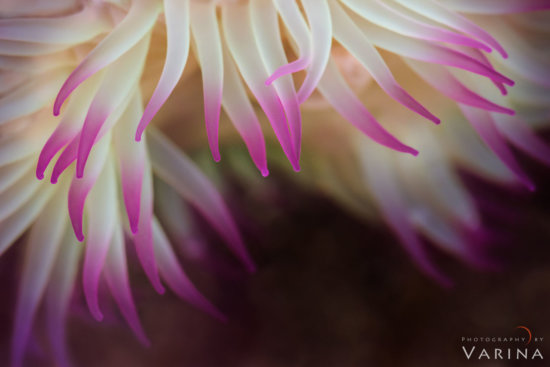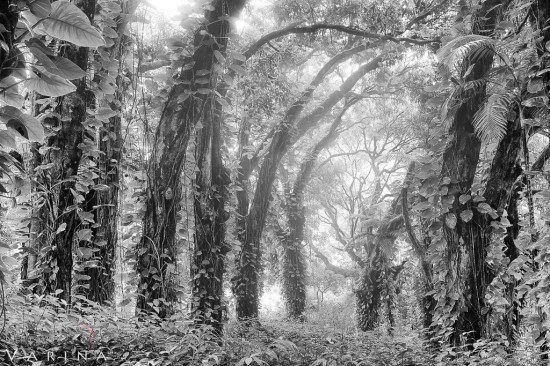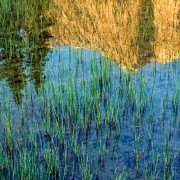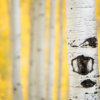How to Capture Award Winning Nature Photographs
Jay and I don’t enter competitions very often, but every now and then it’s fun to print up a few nature photographs and see how they do. I recently entered two images at a Cleveland Photographic Society pictorial competition a while ago. The two images tied for first place. Now, that’s not necessarily typical. Sometimes I win, and sometimes I don’t. But it did get me thinking. How can a photographer – any photographer – select a “winner” for entry in competition?
I’ve judged my share of competitions, and I’ve heard comments from hundreds of judges over the years. The fact is – there’s a lot of repetition in comments from the judges. Whether you’re shooting for a competition, a portfolio, or personal satisfaction, winning nature photographs share a few common characteristics. Here’s how to ensure your shots stand out from the rest.
It’s All About IMPACT
In the world of nature photography, impact is king. Choose an image that grabs the eye of the judge. Your image has to stand out among many – so make sure it catches the eye. The best nature photographs evoke an emotional response—whether it’s awe, serenity, curiosity, or even fear. To achieve this, think about the elements that draw attention.
- Is your subject extraordinary? A rare animal, a dramatic sunset, or a pristine wilderness scene can immediately grab the viewer’s eye.
- How’s the lighting? The golden hours of early morning and late afternoon often provide the soft, warm light that adds drama to your image.
- What story are you telling? Whether it’s the resilience of a sprouting flower through cracked earth or the raw power of a storm, your photo should have a narrative.
Take time to consider your framing, your subject, and the emotion you want to convey. If your photo doesn’t make someone stop scrolling, it’s time to rethink your approach.
Simplify Your Nature Photo
One of the biggest challenges in nature photography is dealing with visual clutter. I can’t begin to count the number of times I’ve heard a judge say “That thing in the corner is really distracting…” I’ve said it myself. Many times. The natural world is full of details, and while these details are beautiful. So it is tempting to include as much as possible in your photograph – that pretty tree is so nice, and the little barn in the distance has such character, right? In the end, less is more.
- Remove distracting elements: Pay attention to branches, rocks, or other objects that might pull focus away from your subject. If you can’t physically remove them, reposition yourself or crop them out later.
- Use shallow depth of field: Blurring the background with a wide aperture can isolate your subject, ensuring it stands out.
- Think minimalist: Sometimes less is more. A single bird on a branch or a lone tree in a vast field can be more striking than a busy scene.

Minimalist composition created sing a telephoto lens and monotone color scheme – Everglades National Park, Florida
Simplification doesn’t mean making the shot boring; it’s about ensuring every element in your frame serves a purpose.
Provide a Clear Point of Interest
A strong photograph needs a clear focal point—a subject that draws the viewer’s attention and keeps their gaze. How many times have you heard someone say, “I don’t know where to rest my eye.” If your image lacks a defined point of interest, it risks becoming visually confusing.
- Use leading lines: Natural elements like rivers, tree branches, or paths can guide the viewer’s eye to the focal point.
- Frame your subject: Position your main element within a natural frame, such as an arch, foliage, or shadows.
- Contrast is key: Make your subject pop by contrasting it with the background in terms of color, texture, or light.
Always ask yourself, “Where does my eye go first?” If the answer isn’t clear, rethink your composition. A strong point of interest anchors your image and keeps it memorable.
Crop Your Photo Carefully
The crop of your photograph can make or break its composition. Nature photography often calls for a delicate balance: giving your subject space while maintaining focus.
- Mind the rule of thirds: Placing your subject off-center can create a more dynamic composition.
- Leave breathing room: Avoid cropping too tightly; give your subject space to “exist” naturally.
- But don’t overdo the space: Too much negative space can dilute the impact of your subject.

Careful cropping and composition was used to capture this macro photo – Tide Pools, Redwood Forest National Park, California
Cropping a nature photograph depends upon the image, and the rules are flexible. If in doubt, experiment with different crops during editing. A subtle adjustment can transform an ordinary shot into a winning composition.
Get Your Exposure Right
Technical excellence is a non-negotiable aspect of award-winning photography. The right exposure is fundamental to a great a photograph, so here’s what you need to focus on:
- Check for blown highlights: Bright areas with no detail are distracting. Use your camera’s histogram to ensure you’re capturing the full range of tones.
- Avoid underexposure: Shadows and dark areas can add mood, but too much darkness can lead to loss of detail.
- Master manual mode: Learn to balance shutter speed, aperture, and ISO to get the exposure just right.
If you’re unsure, bracket your shots—taking multiple camera exposures of the same scene—to ensure you capture all the details. Correct exposure can turn a good photo into an unforgettable one.
Don’t Overdo Post Processing
Post-processing is an essential part of modern photography, but it’s also a potential minefield. Some judges love it, and some hate it. But in most cases, if post processing is distracting, you’ll end up losing points. Here’s how to strike the right balance:
- Enhance, don’t overwhelm: Use editing software to adjust contrast, color, and sharpness subtly.
- Watch saturation levels: Oversaturated colors can look artificial and detract from the natural beauty of your subject.
- Be mindful of post processing filters: While filters can add flair, they shouldn’t overshadow the original image. Keep in mind that many judges have seen the same Photoshop filters a thousand times.
- Stay true to reality: Nature photography often shines brightest when it looks authentic. Too much processing can diminish the integrity of your work.
Before you finalize an edit, step away and revisit it later with fresh eyes. If the processing jumps out more than the subject, dial it back.
Experiment with B/W Photography
Color and black-and-white photography each have their own strengths. Your choice can significantly influence the mood and impact of your photograph.
- Choose color: Vibrant hues often enhance the emotional and visual appeal of nature scenes. Sunsets, colorful birds, or lush landscapes benefit from the richness of color.
- Go black and white: When textures, shapes, and contrasts are the stars of your shot, black and white can add timelessness and drama. Think of stormy skies, rugged mountain ranges, or the intricate details of tree bark.
If you’re unsure, process your image in both formats and compare. Whichever version better conveys the story and emotion of your shot is the winner.
I’m sure there are a thousand more – but those are the bits of advice that come to mind right away. Creating a winning nature photograph requires more than luck; it’s about preparation, practice, and attention to detail. By focusing on impact, simplifying your composition, mastering technical elements, and thoughtfully editing your images, you can create photos that leave lasting impressions. Remember, photography is as much about your vision as it is about technical skill. The more you refine your craft, the more your unique perspective will shine through.
So grab your camera, step into the wild, and capture the magic waiting just outside your door!












